It’s easy to make golf courses play hard. Almost any course—even your own—can present a tournament-worthy test for great players if you stretch the tee markers as far back as they can go, grow the rough deep, tuck the pins and dry out the greens.
Of course, a setup like that is directed at defending par, effective for stroke-play championships where the winner is determined by the lowest total score. Match-play events—where holes are won and lost and the overall score of a player isn’t relevant—beckon a more nuanced kind of design. Match play is most compelling not when players are grinding out pars but when they’re pushed to their mental and emotional limits by unique hole setups and the strains of the match. Even shorter courses can provide exciting golf when the pressure is on to match your opponent’s birdie. Ideally, the architecture must be capable of stressing skill, strategy and composure in equal measure.
This year’s Ryder Cup venue, the Black Course at Bethpage State Park in New York (Sept. 26-28), is a proven championship stroke-play design that has battered fields during the 2002 and 2009 U.S. Opens (won by Tiger Woods and Lucas Glover, respectively) and the 2019 PGA Championship (Brooks Koepka). It can be obviously brutal, but does it also possess the architectural intangibles that can enhance the theatrics of the world’s most anticipated match-play contest? This year’s Walker Cup (Sept. 6-7) is hosted by Cypress Point for the first time since 1981. Generally considered too short for professional tournaments (Cypress Point last hosted the AT&T Pebble Beach Pro-Am in 1990), it will rely on wind and tempting hole setups to flummox today’s long-hitting amateurs.
Whether for a Ryder Cup or Walker Cup or any other elite-level competition, you need five design and setup elements to make a great match-play course. With these in mind, let’s examine how Bethpage and Cypress Point will measure up.
LENGTH
Prodigious yardage isn’t always necessary to produce entertaining and competitive matches, but a certain amount of length is needed at the elite level if driving the ball well is to be as determinative in winning and losing as the other aspects of the game. As match play is often about matchups (in singles and in teams), identifying players who can take advantage of lengthy par 5s and monster par 4s is a critical factor in pairings.
Bethpage rates highly in this regard demanding length and precision with three par 4s measuring more than 500 yards (not counting the 484-yard 15th, the hardest hole in each of the three previous majors) and fairways that dogleg and pinch in landing zones. In fact, the Black combines the difficult driving aspects of the two previous European host clubs on which the U.S. team struggled: Le Golf National in France, where the narrow fairways demanded pure accuracy, and Marco Simone in Italy, which presented opportunities for power players to cut corners and aggressively shape big carries.
1 / 10 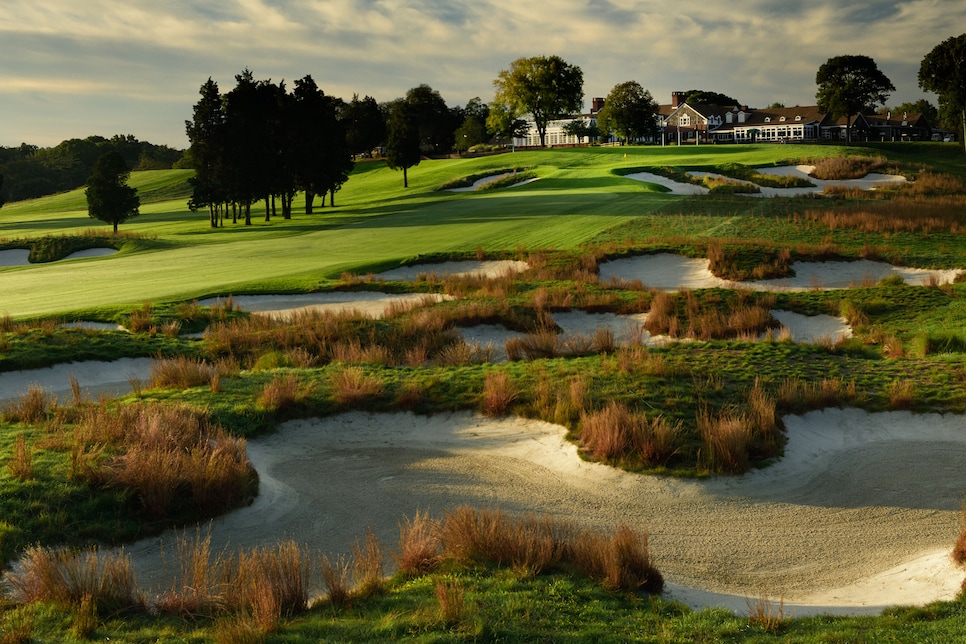
Dom Furore
2 / 10 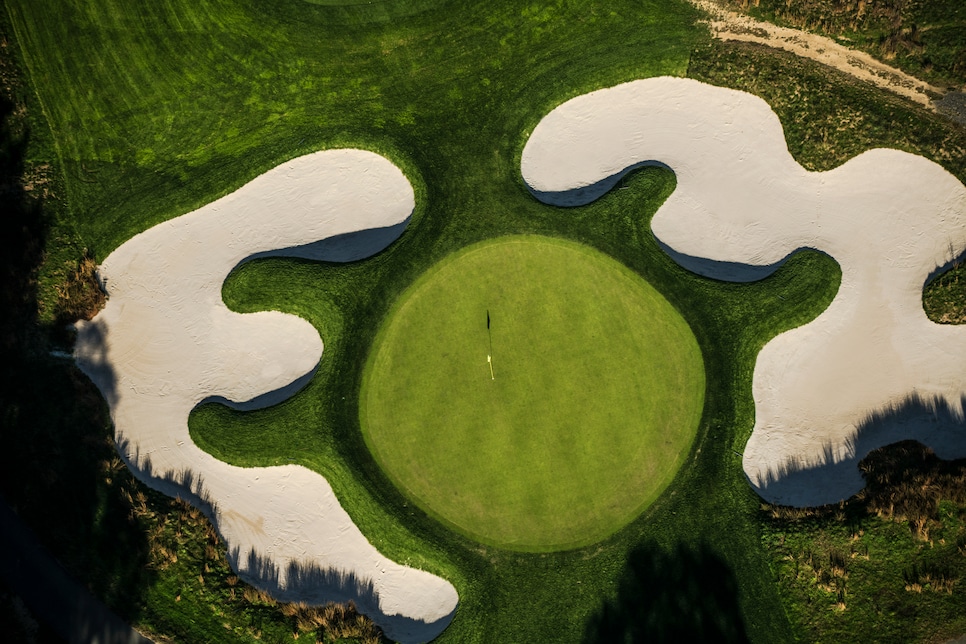
The menacing surrounds at Bethpage Black’s sixth green.
Dom Furore
3 / 10 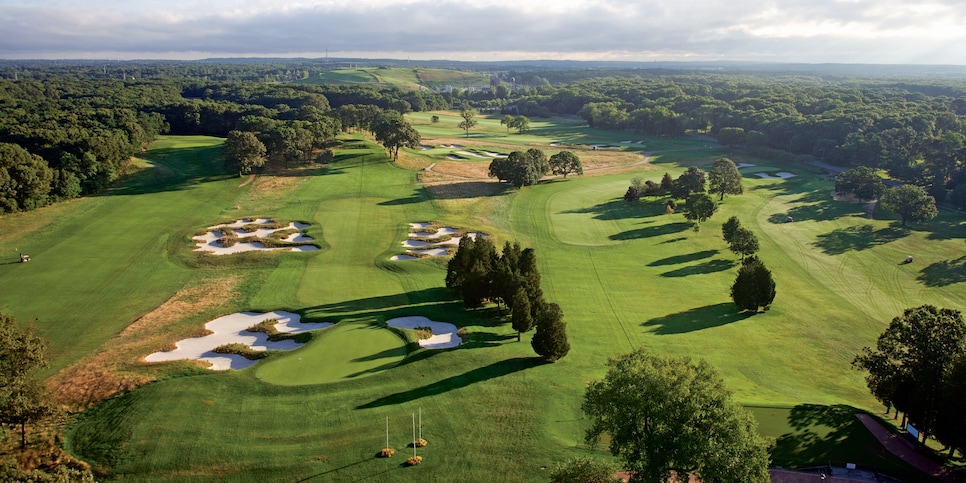
Stephen Szurlej
4 / 10 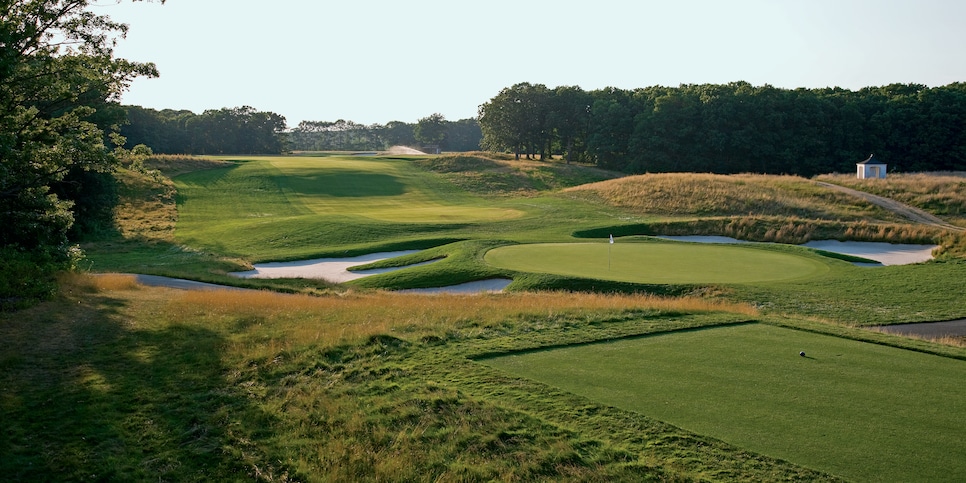
The view behind the sixth green from 7 tee.
Stephen Szurlej
5 / 10 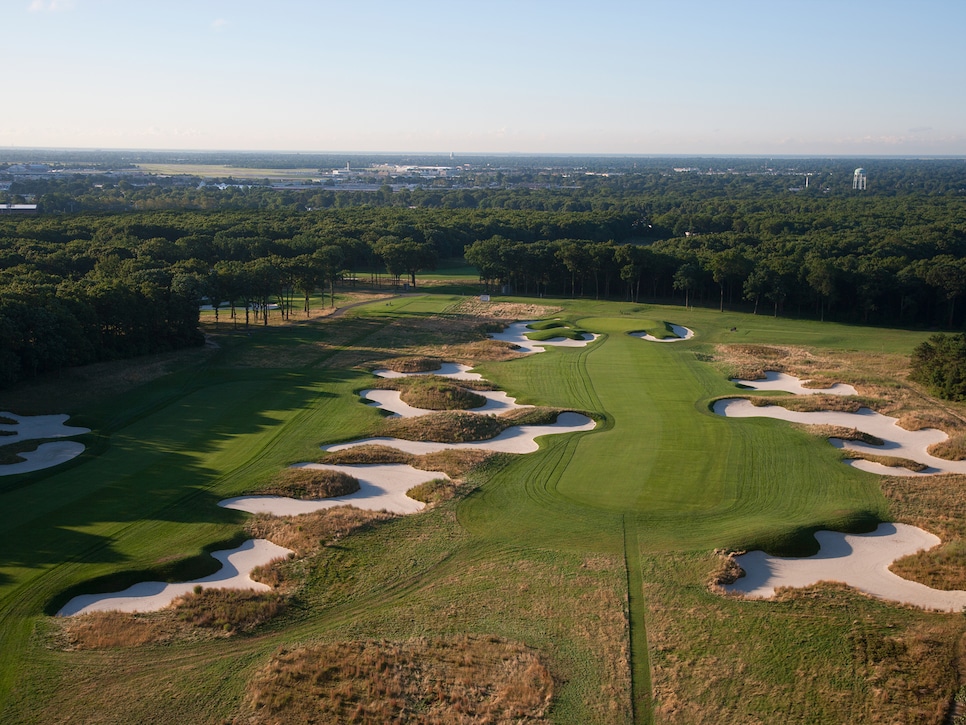
The ultra-difficult stretch of Bethpage Black’s par-4 10th (right), requiring extreme precision off the tee, with the 11th hole—a Pine Valley-like par 4 that also requires a ball stay out of the extended bunker lobes.
Stephen Szurlej
6 / 10 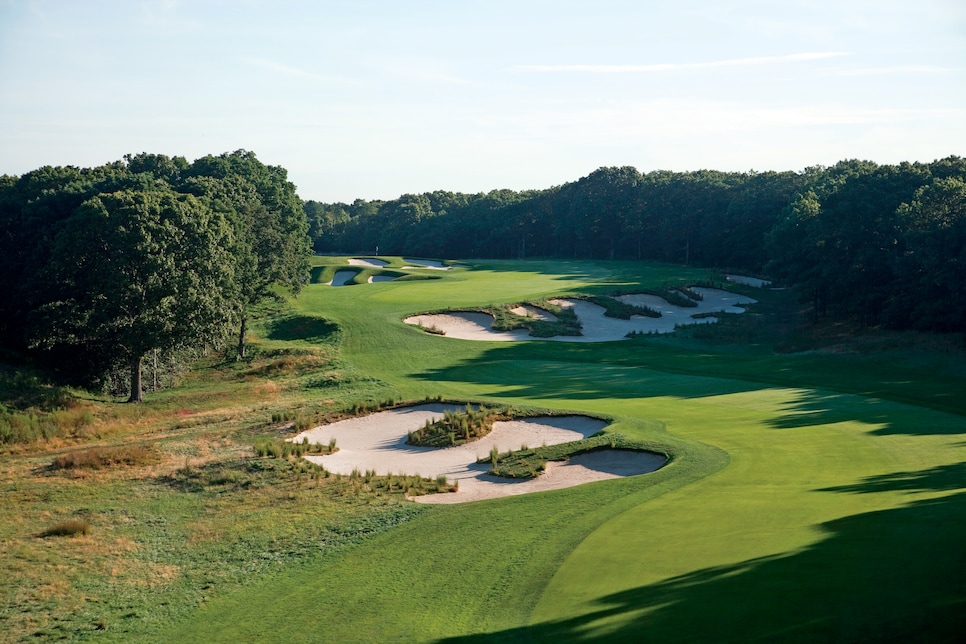
The 517-yard, par-5 fourth hole is guarded by a classic cross bunker.
Stephen Szurlej
7 / 10 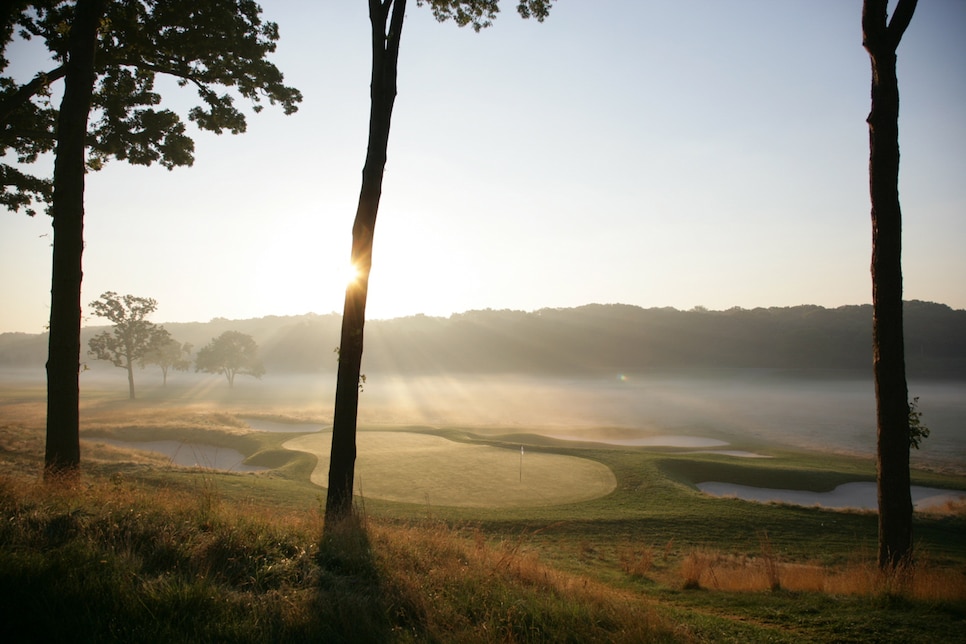
Stephen Szurlej
8 / 10 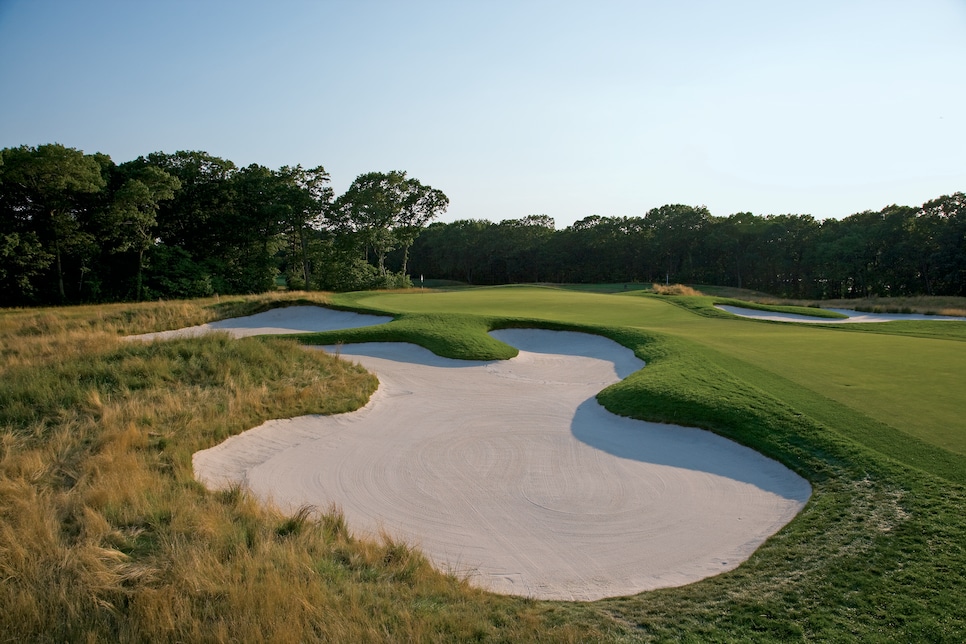
The par-4 12th’s widened fairway gives golfers a bailout option.
Stephen Szurlej
9 / 10 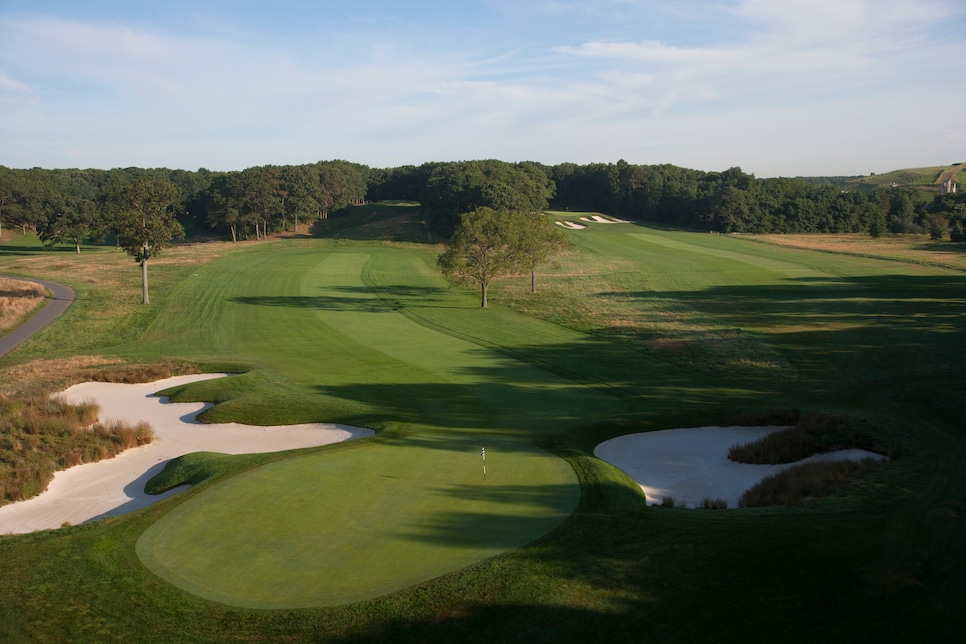
Behind the 16th green.
Stephen Szurlej
10 / 10 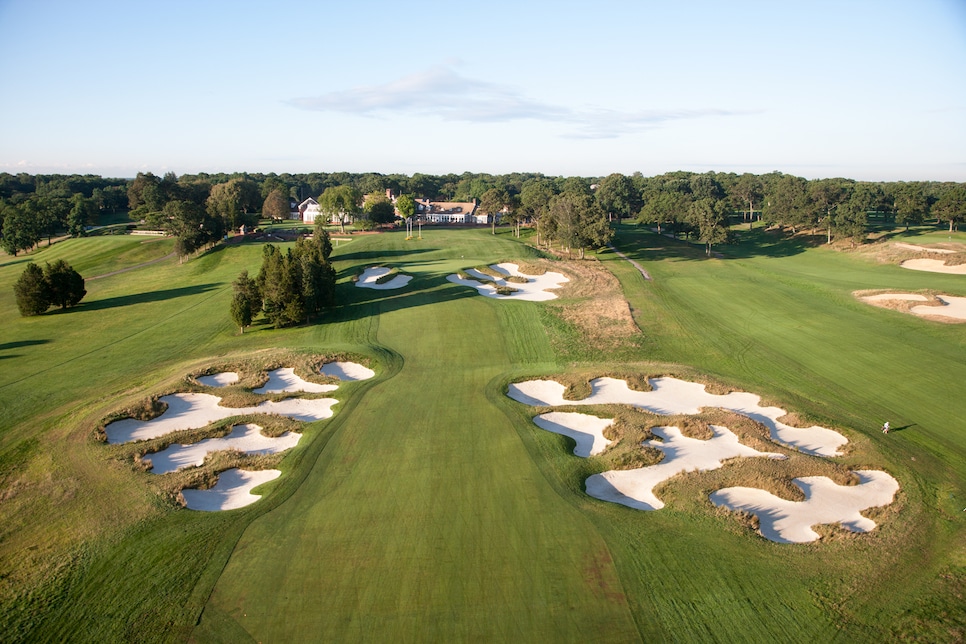
Bethpage Black’s home hole.
Photo by Stephen Szurlej
Previous Next Pause Play Save for later Public Bethpage State Park: Black Farmingdale, NY 4.6 41 Panelists
100 Greatest Public
100 Greatest
Best In State
Sprawling Bethpage Black, designed in the mid-1930s to be “the public Pine Valley,” became the darling of the USGA in the early 2000s, when it brought the 2002 and 2009 U.S. Opens here. Then it became a darling of the PGA Tour as host of the 2011 and 2016 Barclays. Now, the PGA of America has embraced The Black, which hosted the 2019 PGA Championship (winner: Brooks Koepka) and the upcoming 2025 Ryder Cup. Heady stuff for a layout that was once a scruffy state-park haunt where one needed to sleep in the parking lot in order to get a tee time. Now, you need fast fingers on the state park’s website once tee times are available—as prime reservations at The Black are known for going in seconds. View Course
Cypress Point, on the other hand, is vulnerable to power. The course is listed at 6,620 yards for the Walker Cup and in normal conditions, the amateurs will be able to push drives well down the fairways to set up wedges and pitch shots into most par 4s. The brilliance of Cypress Point, ranked third for more than a decade on America’s 100 Greatest Courses, was never predicated on it being long. Players work to score by navigating the tilting fairways through the maze of Alister MacKenzie’s bunkers and with precise approaches into small, heavily sloped greens. Some competitors might be tempted to bomb away, but more birdies will come not because of driver distance but rather due to savvy thinking on the course, some strategic risk-taking and crafty short games.
ADJUSTABILITY 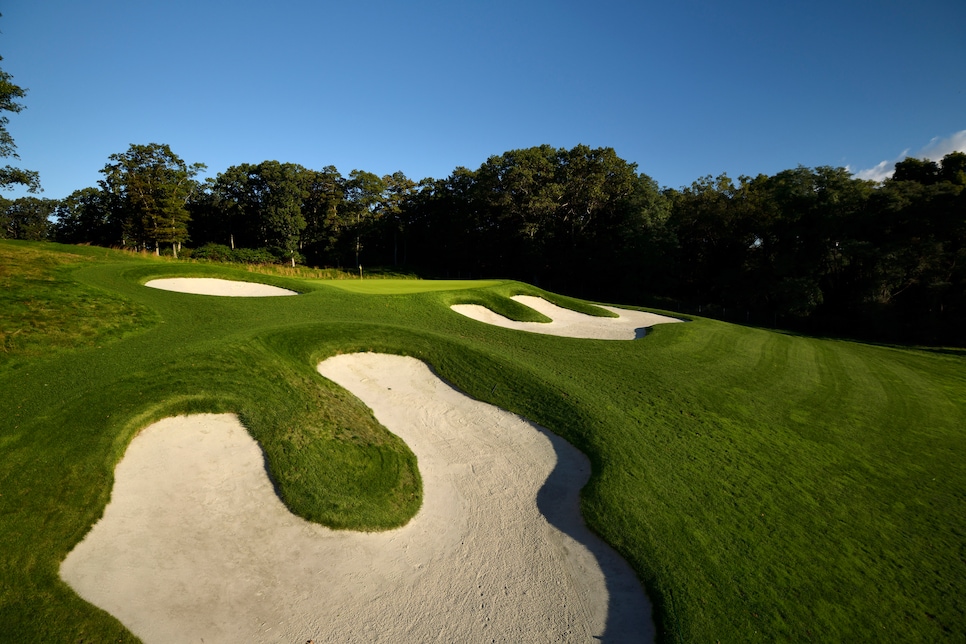
BEASTS OF BETHPAGE: The Black Course tests players physically in match play, as with the 457-yard, par-4 15th, all uphill.
Dom Furore
The ability to keep players off balance hole to hole and day to day is essential to great match-play courses. Length adjustment through tee-marker placement introduces a range of landing zones, putting added emphasis on adaptation and decision-making. Part of the head-to-head calculus is selecting the correct club based on the standing of the match and what the opponent has just done—the wider the range of targets, the tougher the choices.
Adjustable setups also factor heavily in foursomes, where teammates alternate shots. Setups that irregularly alternate between very long and shorter holes require strategic forethought into pairings and the order of who hits the tee shots. If courses can mix these combinations up daily, the pairings become a puzzle.
Even though par values don’t matter in match play, the psychology of a hole changes when a routine par 5 is set up as a formidable par 4. Most courses that host major match-play events already have at least one par 4 that’s reachable from the tee, but an adjustable setup can throw a twist at the competitors if a usually long two-shot hole is presented as driveable.
The par-4 eighth and ninth holes at Cypress will be fascinating to watch. Both are reachable from the tee but require high-risk shots that present dire opportunities for recovery on misfires. Other tees throughout the design can be altered so that players will have to react to their opponents and the situation of their match. Because of the tee-box limitations at Bethpage, that course has less flexibility—its holes are designed to be long and difficult. The par 5s, Nos. 4 and 13, need to be as lengthy and challenging as they can be, but an intriguing option would be to move the markers as far forward as possible at holes like two and, especially, 18 to try to temp players into going for the green with carries of around 315 to 325 yards.
1 / 7 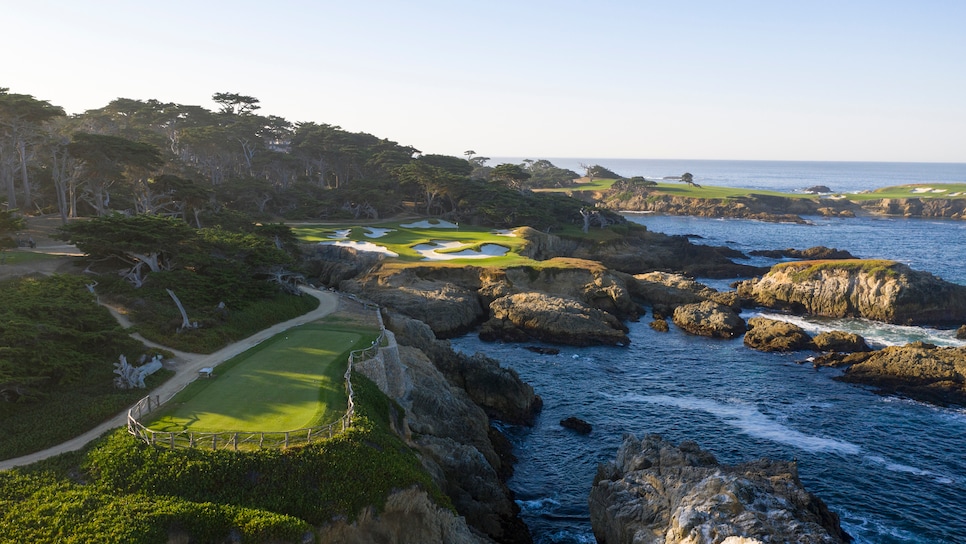
Carlos Amoedo
2 / 7 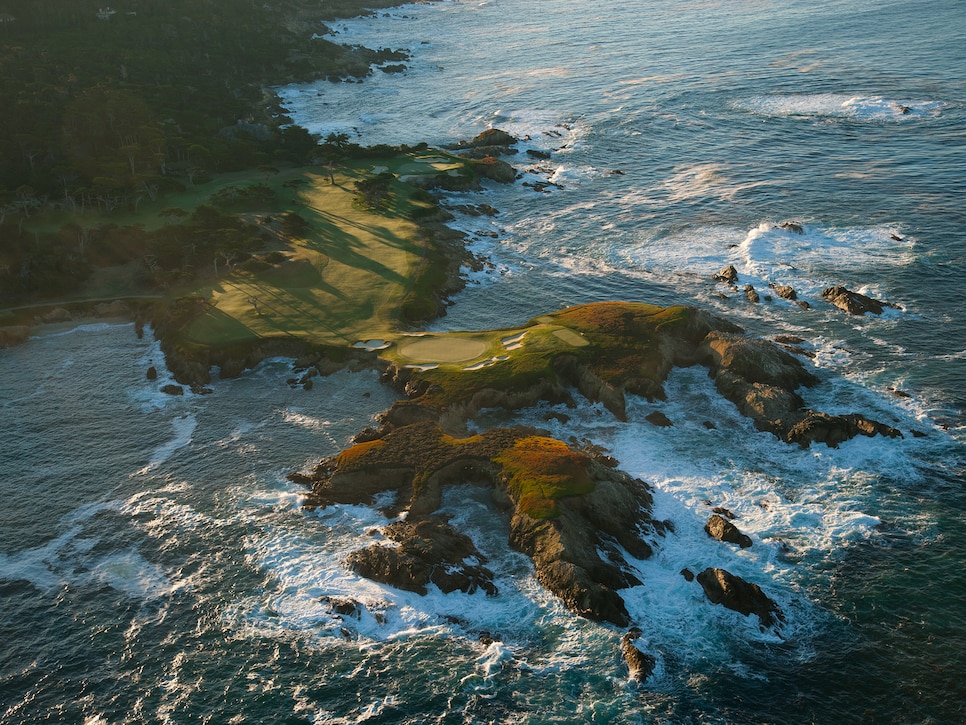
J.D. Cuban
3 / 7 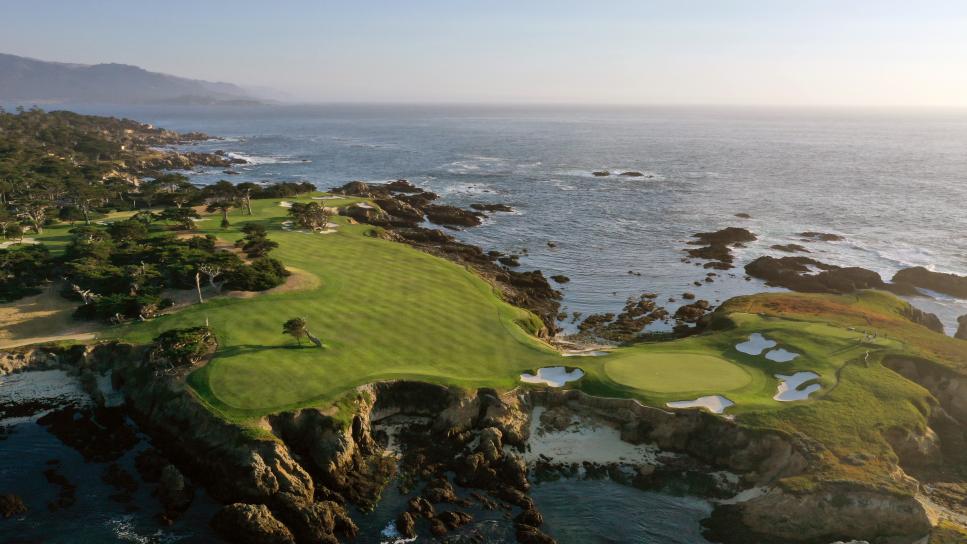
Carlos Amoedo
4 / 7 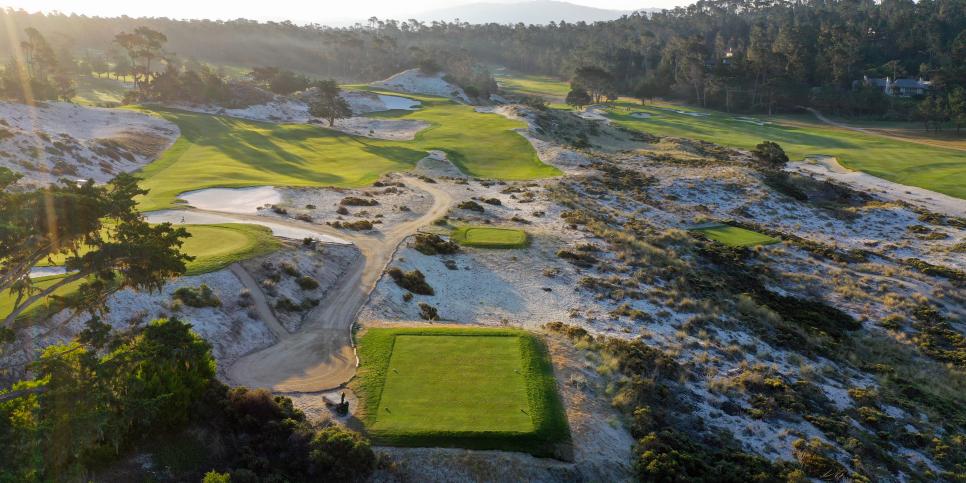 5 / 7
5 / 7 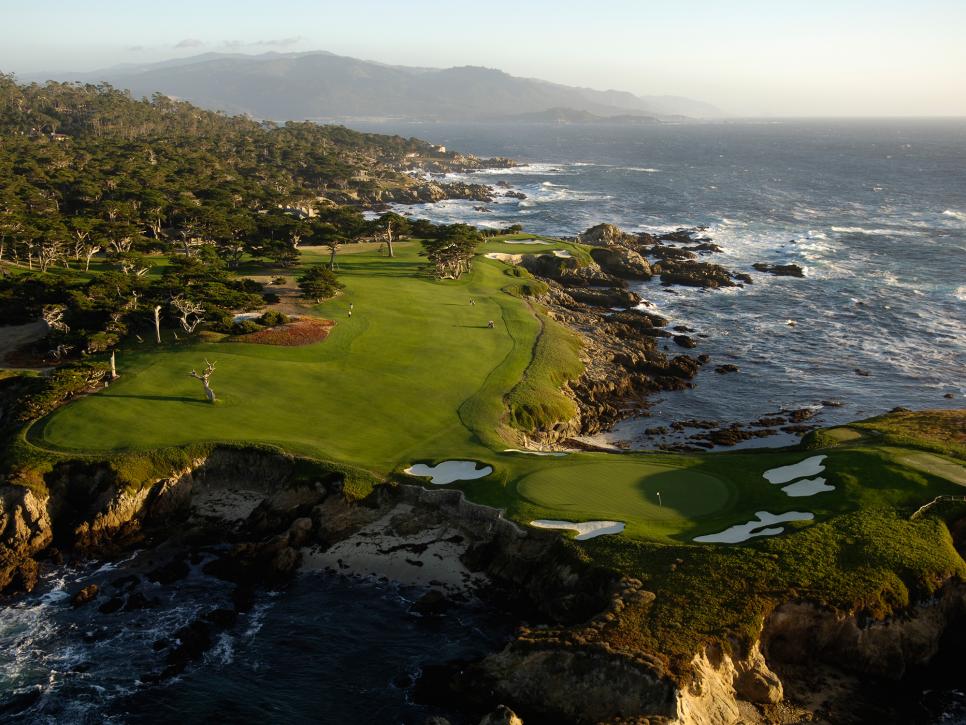
J.D. Cuban
6 / 7 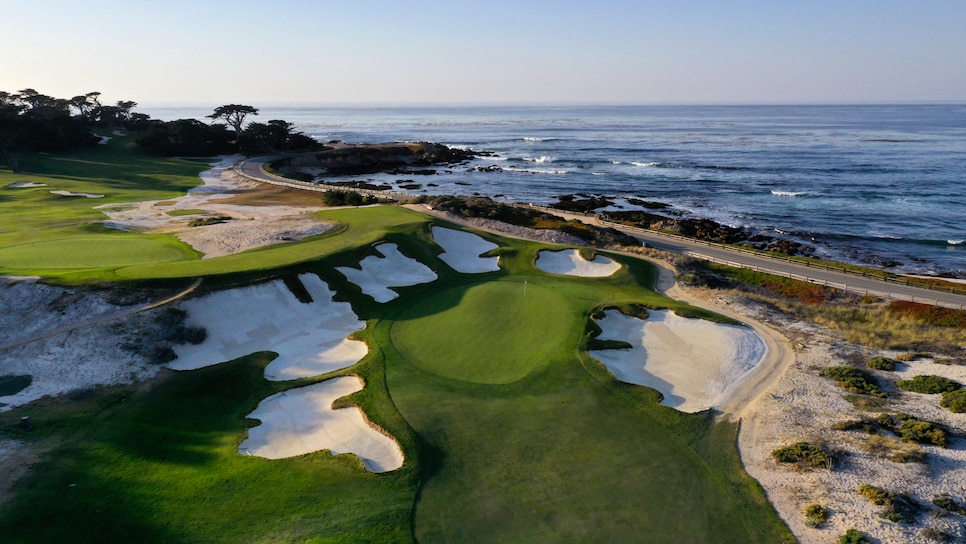
Carlos Amoedo
7 / 7 ](https://golfdigest.sports.sndimg.com/content/dam/images/golfdigest/fullset/2015/07/21/55ad8e80add713143b42e6c9_courses-2013-02-cosl03_cypress_point_618.jpg.rend.hgtvcom.966.690.suffix/1573448858917.jpeg)
Stephen Szurlej
Previous Next Pause Play Save for later Private Cypress Point Club Pebble Beach, CA 5 27 Panelists
100 Greatest
Best In State
From Golf Digest Architecture Editor emeritus Ron Whitten:Cypress Point, the sublime Monterey Peninsula work of sandbox sculpture, whittled Cypress and chiseled coastline, has become Exhibit A in the argument that classic architecture has been rendered ineffectual by modern technology.I’m not buying that argument.Those who think teeny old Cypress Point is defenseless miss the point of Alister MacKenzie’s marvelous design.MacKenzie relished the idea that Cypress Point would offer all sorts of ways to play every hole. That philosophy still thrives, particularly in the past decade, after the faithful restoration of MacKenzie’s original bunkers by veteran course superintendent Jeff Markow.Certainly one way to play Cypress is the full-bore, take-dead-aim, grip-it-and-rip-it, bomb-and-gouge approach. But it’s also a course where finesse still matters, where course management is still rewarded. Yes, long bombers can go low at Cypress Point these days, but so can short-hitting, thoughtful players, who much like sailors in a storm tack their way around bunkers, trees, dunes and ocean coves. And when the winds come up, as they often do at Cypress, it’s the latter approach that’s likely to be more successful.MacKenzie never believed much in three-shot par 5s, so if the 491-yard par-5 fifth is just a driver and 8-iron to many, well, both shots must still avoid acres and acres of sand bunkers splattered across the rolling fairway.Would the downhill 289-yard par-4 ninth, with its narrow stairstepped green tucked between sand dunes, be any more challenging if it would be lengthened 50 or 75 yards? It would still be reachable from the tee for big hitters, but out of range for ordinary players, robbing the majority of the fun and consternation of trying to drive a par 4.Likewise, little would be gained by lengthening the tiny 139-yard 15th, which plays over a cauldron of swirling Pacific. Curiously, MacKenzie lamented that the 15th lacked, “a sufficient number of alternative shots necessary to play it.” But he forgot about the wind, which invariably is either directly into one’s face, or blowing out to sea.As for the infamous par-3 16th, listed at 233 yards, its tee could be moved back up a hill to 260 yards, or even the 280-yard range. But why? To revive the debate whether Mackenzie originally intended the hole to be a short par 4?One of the great myths of Cypress Point is that founding member Marion Hollins, the 1921 U.S. Women’s Amateur champion, convinced MacKenzie to reduce the 16th to a par 3. Jack Fleming, who supervised construction of the course, set the record straight 50 years ago. MacKenzie always conceived the hole as a heroic one-shotter, alternatively as a drive-and-pitch-par 3. Describing the 16th to San Francisco golf writer Art Rosenbaum, Fleming related:“Miss Marion Hollins and I watched as he [Dr. MacKenzie] took his place exactly where the back tee is today on the 16th. He said, ‘This is the place, over the water.’ We thought he was crazy and told him so, politely of course. Dr. MacKenzie would not budge. He said, ‘Dammitall, the land side is too simple. It they don’t have the game for it, they can play to the left. If they go to the green, they will be credited.’ ”Ironically, the one hole Mackenzie wanted longer was the 343-yard 18th, where a conventional fairway later become forested by the encroachment of cypress trees. Mackenzie had designed a back tee 50 yards out on an ocean rock, even proposed a suspension bridge to reach it, but it was never built. Today, despite some tree clearing, it’s still the most confounding of holes at Cypress Point, where even a big hitter has no true advantage.What’s not to like about that? View Course GREAT GREENS
Putting is as important a component to winning holes as driving and iron play. It follows that great match-play courses should possess fascinating, challenging green contours. The only way to truly test the putting acumen of the best players is through a world-class set of rolling or sloping greens like at Augusta National or Oakmont, where two-putting can put as much strain on the psyche as hitting narrow fairways.

GREAT TEMPTATIONS: Walker Cuppers can try to drive the green at the par-4 ninth but missing has dire consequences.
Stephen Denton
Of all the courses in Golf Digest’s top 50, Bethpage (No. 38) likely has the least distinguished set of greens. Though tilted and not particularly large, they generally don’t possess significant internal contour (the 15th and 17th are exceptions) and offer as much pinnable area as any American major championship course. When players keep their approaches below the hole, they’ll face mostly straightforward, makeable putts.
Cypress Point’s greens are devilish. Many have distinct hole locations separated by significant slopes and swales, and all have tremendous pitch in one direction or the other. Though the approach shots are generally shorter, putts tend to break significantly as they near the hole (especially in the common windy conditions), and extreme precision is required to challenge certain tight hole locations. Creative touch and feel on the greens are as valuable at Cypress Point as just about anywhere.
AN INTIMIDATING START
Ryder Cup and Walker Cup players are already intensely nervous teeing off on the first hole of their matches, but the intimidation factor intensifies when the opening hole is a brute. Stadium seating surrounding the tee during the Ryder Cup dials up the pressure even more. Bethpage’s first hole certainly qualifies as intimidating as hitting the dogleg-right fairway from the elevated tee is a must—no one wants to begin a match playing out of the Black’s deep rough. The first at Cypress Point, on the other hand, is more of a warmup and one of the design’s least dramatic holes, though the elevated green is heavily sloped toward the front and doesn’t yield easy birdies. Though these both count as just one hole in each match, winning an especially tough opener can psychologically feel like going 2 up.
PENAL LATE
As fun as it is to see players and teams exchange birdies or even eagles, they should be asked to physically and emotionally handle the stress of power holes late in the round. The best match-play courses have plenty of tantalizing half-par holes that test calculated aggression, but they should also possess difficult, penal holes that occur in the heart of the second nine when the tension is highest and matches are often won or lost.
For the 2022 Presidents Cup at Quail Hollow, the PGA Tour adjusted the diabolical sequence of holes known as the Green Mile—holes 16, 17 and 18—so that they fell in the middle of the second nine to ensure the majority of groups would face them before matches were closed out. Bethpage needs no adjustment. Its 17th and 18th pose their own challenges, but they pale compared to the strain of the gauntlet of par 4s at 12, 15 and 16 sandwiched around the 13th, a tight 608-yard par 5. These holes have no problem extracting strokes and will provide a reckoning for many of the matches.
There’s no similar death march through Cypress Point’s second nine, but the majesty of its closing clifftop holes will undoubtedly intensify the pressure as players attempt to survive or turn matches. It would be impossible for the competitors to not feel the added gravity of hitting the most important shots of their lives around the Octopus Cypress on the 14th, into the small 15th green tucked into its rocky Pacific cove, across the ocean at the 16th, arguably the world’s greatest par 3, and driving diagonally over the cliffs at the par-4 17th.
This article was originally published on golfdigest.com

